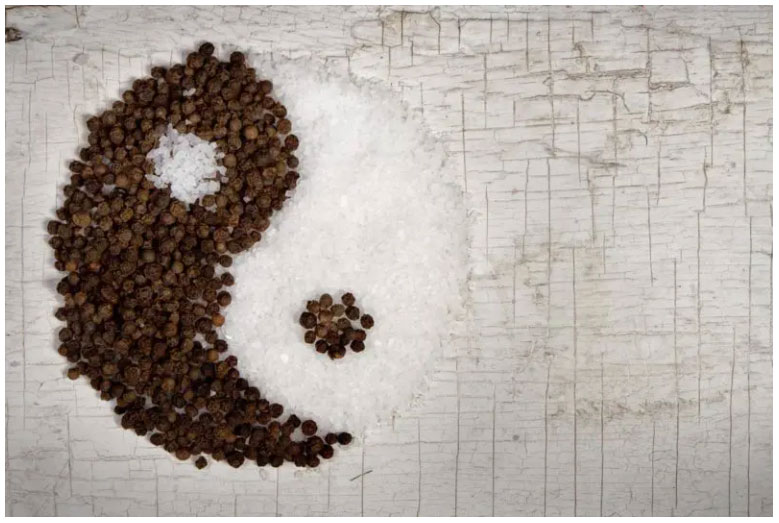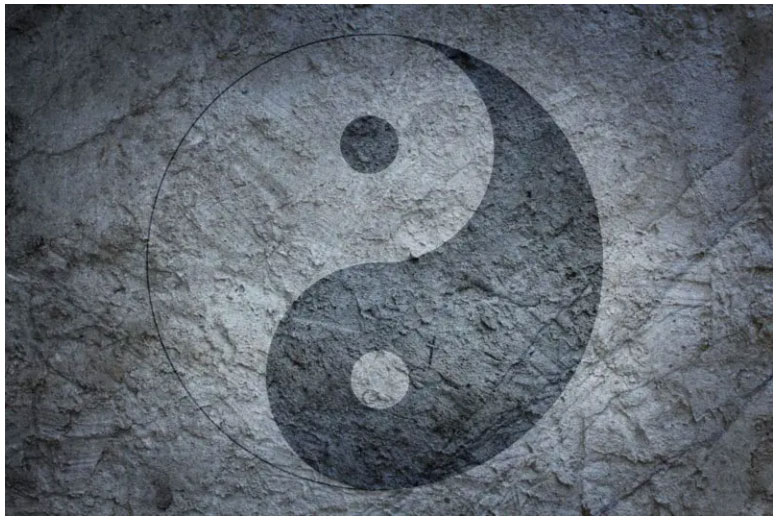Yin Yang meaning
When talking about philosophical beliefs and concepts from Asia, the symbol of Yin Yang is frequently mentioned. However, although popular, it is common to not know the exact meaning of this symbol. So what is it really? Where does it come from, and what significance does it have?
The origins
The history of this symbol is little known, although it plays an important role in Chinese philosophy, it is not clear when this theory appeared. The first texts presenting this symbol date back to the 3rd century B.C.E., but there is nothing to say that it did not appear before.
This symbol was first used by Zou Yan. The latter was a philosopher, cosmologist and scholar who lived in ancient China. His main theory is based on the fact that the appearance of life comes from 5 successive phases: fire, water, metal, wood, and finally earth. According to him, these phases are in permanent change depending on whether they are in a state of Yin or Yang.
Some people talk about the formation of Yin and Yang when the universe emerged, creating a real chaos responsible for the creation of these two forces. Other people believe that a balance between these two forces led to the creation of the first human being. Several theories are therefore fundamentally linked to this symbol.
Yin Yang also seems to be the foundation of Taoism and Confucianism. These two currents each focus on a part of the symbol: Yin for Taoism and Yang for Confucianism. Apart from these currents of thought, the theory of Yin and Yang has also had a considerable impact on science, since this symbol can be found many times in one of the oldest books of Chinese medicine: the Huangdi Nei Jing Suwen.
Through the centuries, the symbol has endured, and today it has the same meaning as it did more than 1000 years ago.

Definition and composition of Yin Yang
The Yin Yang is formed of a circle in which there are two parts. A black part with a white dot and a white part with a black dot. By its nature, the symbol forms a whole and cannot exist without its circle, one or the other of its parts, or the dots. Here is the meaning of the different elements that make up the symbol :
The circle :
The circle symbolizes our universe, the one in which we live. It is composed of opposing forces which, when they confront each other, provoke movements and evolutions in the said universe. The circle thus symbolizes the perpetual movement of the world in which we live, thanks to the work of two opposite energies (the Yin Yang).
Yin and Yang :
The Yin and the Yang are thus two opposite energies, but which are part of a complex whole. According to Chinese cosmology, the Yin (black part) is associated with darkness and water. Yang (white part) is associated with light and earth. Yin is globally seen in a negative way and Yang in a positive way. Yin is also referred to the dominated and Yang to the dominant. This binary decomposition can be applied to static and dynamic phenomena.
Yin can represent :
• Femininity
• Passivity: Yin is rather an energy with a receptive tendency.
• Intuition: Energy that has a great sense of intuition and understanding of the different elements that make up our universe.
• Creation: all creativity resides in Yin.
• The moon: the different phases of the moon can affect the Yin
• Darkness
• Cold: Darkness causes cold, which opposes the heat of Yang.
• Submission: calm energy
• The night: linked to the darkness
• Softness: linked to submission, this energy is calm, flexible and generous.
• The tranquility
• Flat water: Yin is reminiscent of the water contained in rivers, lakes, deep waters
As for the Yang, it represents :
• The masculine
• The action: Yang, because of its masculinity, is a powerful and energetic energy.
• Water activates: currents in rivers, oceans and rising tides.
• Logic: unlike the rather creative Yin, Yang represents logic in all things.
• Enlightenment: Yang illuminates the darkness produced by Yin
• Brilliance: in connection with illumination
• The sun: the movements of the sun affect yang energy
• The light
• Dominance: the Yang dominates and imposes its strength in comparison with the Ying where one finds submission.
• The strength
• Warmth: the strength and sunshine of Ying provides heat
• Expansion: its strength and action allows it to be in constant expansion, although slowed down by the Yin.
• Hardness: unlike soft and flexible Yin
• The movement
• Mountains: the force of Yang is expressed through these mountains that rise towards the heavens.
The two points :
The two points white and black remind us that everything is never all white or all black, there is always a part of one in the other and vice versa. Thus they demonstrate that nothing is absolute. For example, there is always a part of good in someone who is bad, and the reverse is also true. White needs black to exist, just as black needs white.
The dividing line :
An S-shaped curved line separates the two zones. This S-shaped fluidity reminds us that the two parts are opposed while pushing and yielding from the ground. Thus, one is dependent on the other and vice versa. The Ying and the Yang support each other and manage to form a whole. If this were not the case, there would be no balance between the two forces.

The five points that define Yin Yang
The two entities are not absolute
In other words, things are not 100% dark or 100% light. The two entities are interdependent, and they cannot exist without their opposite. One of the most concrete examples concerns the night that turns into day, and the latter that turns into night.
They are not static
Both entities are constantly evolving and moving. They regularly change in size relative to each other, but always end up balancing each other. Example: the length of the nights which varies according to the changes of season.
Yin Yang forms a whole
No entity can exist completely without its half. If one grows or shrinks, the other will also be modified in the opposite way.
Entities may be unbalanced
Imbalances can be observed between Yin and Yang. One is generally in excess, while the other is diminished. A slight imbalance is not so bad. However, if it persists over time, or is too great, it is not considered good. For example, in the health field, each entity must be balanced to consider us healthy.
Yin and Yang can be divided into other entities
Each entity can be subdivided into several other entities. For example, an aspect of darkness can be divided into total darkness or penumbra.
Yin Yang in everyday life
Yin Yang can be found in our everyday life, in nature, etc. You can first of all see it in the succession of the different seasons during the year, which is nothing more and nothing less than a cycle dependent on balance and harmony. The two entities are also found in the cycle of day and night, and in the cycle of day and night ocean tides. Another example, the symbol is seen at the level of the emotions we can feel, such as joy and sadness or happiness and unhappiness.
A body practice of breathing and physical movements, called Qigong, uses the principles of Yin Yang. The upper body corresponds to Yang, while the lower body corresponds to Yin. The center of the body is the place where the two energies meet and form a whole. It is truly the point of balance.

Ying Yang and Feng Shui
Feng Shui is a millennial art seeking environmental harmony of a place in order to promote the health, well-being and prosperity of its inhabitants. It is based on the two energies Yin and Yang. Within our living space, each room can be assimilated to Yin or Yang depending on its activity. Yin and Yang must be in agreement and in balance to ensure a good circulation of IQ (chi) energy within the house. The chi energy must find a harmonious environment during its circulation. If the Yin and Yang are out of balance, this balance must be restored so as not to disturb and unbalance the chi in turn. Otherwise the occupants of the house must expect to suffer from illness, financial losses, social or professional problems.
The rules of Feng Shui can be diverse and varied, for example :
- An obstructed door will prevent the free flow of chi energy. This obstacle can also lead to it in all areas of your life. The more welcoming the door is, the more energy will circulate in a beneficial way.
- Stairs must also be correctly placed. A staircase along a wall facing outside will not prevent chi energy from flowing through your home, but a central staircase will. This could result in financial losses, among other things.
- The kitchen should preferably be placed at the back of a house, rather than at the front visible from the entrance, so as not to prevent the flow of chi.
Conclusion
Yin Yang is therefore a thousand-year-old symbol, but still relevant today. This constant duality between two powerful energies is a source of fantasies and passions for us Westerners, but it reflects a true art of living in everyday life, at home and with those around us. Yin Yang also allows us to understand how the world works and how to improve it so that everyone feels at ease in it. Everyone can appropriate this philosophy of thinking, and adapt it to their own life.


